The cellar of an 18th-century coffeehouse has been unearthed in Cambridge, revealing a dynamic social venue

Researchers are discovering that Clapham’s was a versatile venue, filling a variety of social and gustatory needs. In addition to hot beverages, including coffee, chocolate, and tea, patrons could enjoy small bites and substantial meals or let off steam throughout the evening with ale, wine, liqueurs, and fancy desserts. The variety of food and drink available at Clapham’s is reflected in fragments from hundreds of serving dishes, storage bowls, bottles, glasses, and coffee and tea cups of every size, as well as numerous animal remains. While many of these items are also commonly associated with taverns from the same period, slight differences distinguish Clapham’s as a coffeehouse and are key to understanding its unique place in the community’s social life.
The historical record is laden with references to coffeehouses in seventeenth- and eighteenth-century Britain. In 1755’s A Dictionary of the English Language, Samuel Johnson defined them succinctly as houses “of entertainment where coffee is sold, and the guests are supplied with newspapers.” The beverage itself originated on the Arabian Peninsula in the late Middle Ages and spread across the Ottoman Empire to Europe, arriving in England by the early 1600s. For over 200 years, coffee was almost exclusively consumed in coffeehouses, which reached peak popularity between the late seventeenth and mid-eighteenth centuries.
Esta historia es de la edición September/October 2018 de Archaeology.
Comience su prueba gratuita de Magzter GOLD de 7 días para acceder a miles de historias premium seleccionadas y a más de 9,000 revistas y periódicos.
Ya eres suscriptor ? Conectar
Esta historia es de la edición September/October 2018 de Archaeology.
Comience su prueba gratuita de Magzter GOLD de 7 días para acceder a miles de historias premium seleccionadas y a más de 9,000 revistas y periódicos.
Ya eres suscriptor? Conectar

ORIGINS OF PERUVIAN RELIGION
While investigating looters' holes at the site of La Otra Banda in northern Peru's Zaña Valley, archaeologist Luis A. Muro Ynoñán of the Field Museum and the Pontifical Catholic University of Peru spotted carved blocks around seven feet below the surface.

ISLAND OF FREEDOM
Many of the enslaved Africans sent to Brazil beginning in 1549 were from what is now Angola, where one of the most widely spoken languages was Kimbundu.
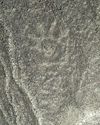
NAZCA GHOST GLYPHS
From the 1940s to the early 2000s, geoglyphs were discovered in the Nazca Desert of southern Peru depicting animals, humans, and other figures at the rate of 1.5 per year.

COLONIAL COMPANIONS
The ancestry of dogs in seventeenth-century Jamestown offers a window into social dynamics between Indigenous people and early colonists.
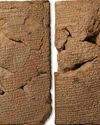
BAD MOON RISING
The British Museum houses around 130,000 clay tablets from ancient Mesopotamia written in cuneiform script between 3200 B.C. and the first century A.D.
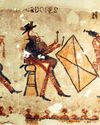
DANCING DAYS OF THE MAYA
In the mountains of Guatemala, murals depict elaborate performances combining Catholic and Indigenous traditions
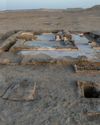
LOST GREEK TRAGEDIES REVIVED
How a scholar discovered passages from a great Athenian playwright on a discarded papyrus

Medieval England's Coveted Cargo
Archaeologists dive on a ship laden with marble bound for the kingdom's grandest cathedrals
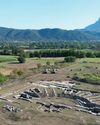
Unearthing a Forgotten Roman Town
A stretch of Italian farmland concealed one of the small cities that powered the empire
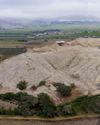
TOP 10 DISCOVERIES OF 2024
ARCHAEOLOGY magazine reveals the year's most exciting finds